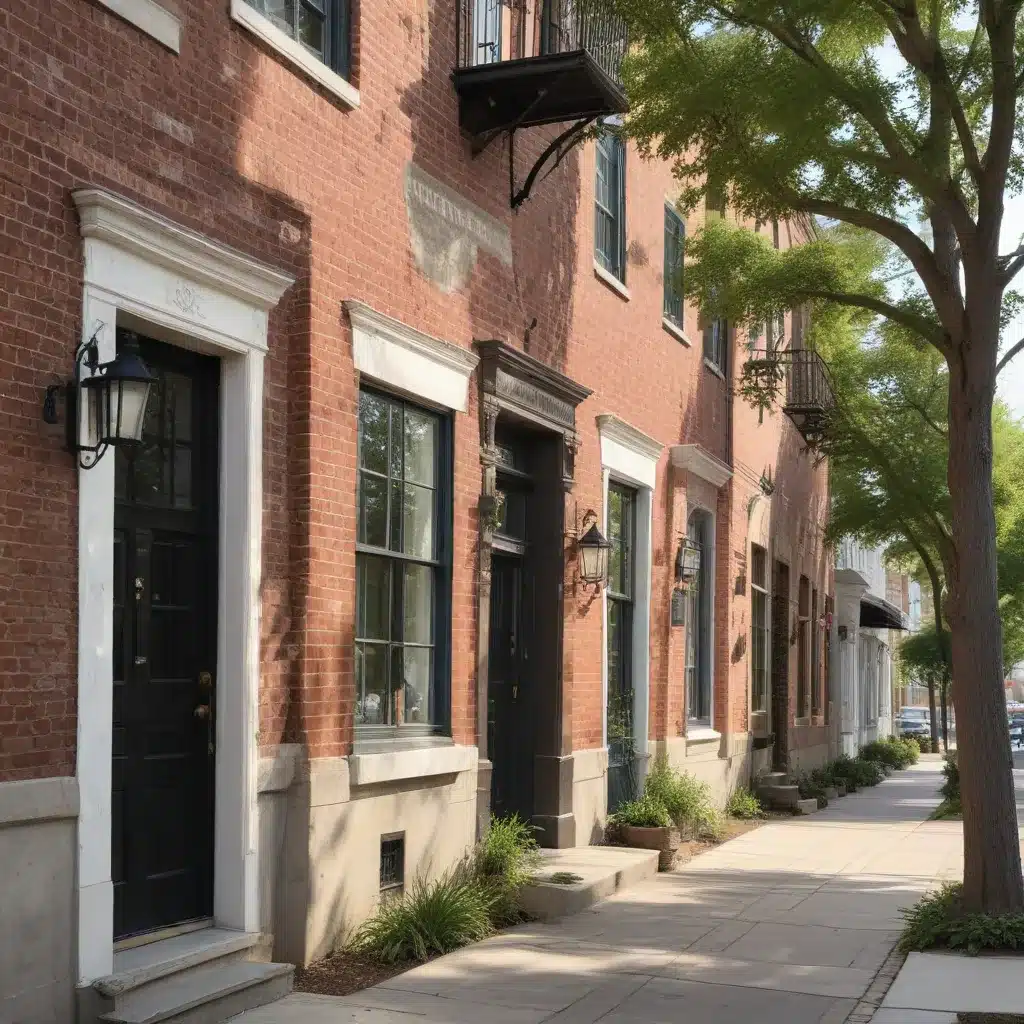
Reviving Historic Charm: Balancing Past and Present
In the ever-evolving world of home renovation, there’s a growing appreciation for the unique allure of historic homes. These architectural gems offer a tangible connection to the past, captivating homeowners and design enthusiasts alike. However, breathing new life into these time-honored structures requires a delicate balance – one that preserves their historic charm while seamlessly integrating modern conveniences and aesthetics. As an experienced home improvement consultant, I’m thrilled to share insights on this captivating renovation journey.
Architectural Preservation: Honoring the Past
At the heart of reviving historic charm lies the fundamental task of preserving a home’s architectural integrity. This process begins with a thorough assessment of the property’s historical significance, examining its key architectural features, materials, and construction methods. By understanding the home’s origins and original design intent, renovators can develop a thoughtful plan to maintain its timeless character.
One crucial aspect of this preservation effort is adaptive reuse – the strategic repurposing of existing structures to suit contemporary needs. This might involve repurposing a once-forgotten attic into a cozy home office or transforming a seldom-used formal living room into a inviting multi-purpose family space. The key is to respect the original design while introducing practical, modern functionality.
Equally important is the reverence for original design elements. Restoring intricate moldings, refinishing gleaming hardwood floors, and carefully preserving unique fenestration patterns can breathe life back into a historic home. By honoring these timeless features, renovators can ensure that the home’s architectural heritage remains an integral part of the overall transformation.
Integrating Modern Elements: Embracing the Future
While preserving the past is paramount, successfully reviving historic charm also requires the thoughtful integration of modern elements. This delicate balance is essential in enhancing a home’s functionality, energy efficiency, and aesthetic appeal for today’s homeowners.
Enhancing Functionality: Historic homes were often designed with different lifestyle needs in mind. Renovators must carefully examine the home’s layout and infrastructure to identify areas that require modernization, such as updating outdated electrical systems, improving insulation, or reconfiguring dated floor plans to accommodate open-concept living.
Sustainable Renovations: As homeowners increasingly prioritize eco-friendly living, historic home renovations present an opportunity to incorporate sustainable design strategies. This might include upgrading to energy-efficient windows, installing high-performance insulation, or incorporating renewable energy sources like solar panels. By blending historic charm with modern sustainability, renovators can create homes that are both environmentally responsible and aesthetically pleasing.
Contemporary Aesthetics: While preserving the historic essence is crucial, there is also room to selectively introduce contemporary design elements that complement the home’s original character. This might involve selecting timeless yet modern finishes, such as sleek kitchen cabinetry or a minimalist bathroom vanity, that seamlessly integrate with the home’s historic bones.
Honoring the Past, Embracing the Future
Reviving historic charm is not merely about restoring a house – it’s about reviving the stories and traditions that have shaped a community’s architectural heritage. By honoring the past while embracing the future, renovators can breathe new life into these cherished structures, creating homes that are both timelessly beautiful and eminently livable.
Reviving Forgotten Stories: Historic homes often hold the keys to the past, with each nook and cranny containing the echoes of former inhabitants and the evolution of a neighborhood. Renovators have the unique opportunity to uncover and celebrate these forgotten stories, infusing the home with a renewed sense of purpose and identity.
Celebrating Cultural Heritage: Many historic homes serve as tangible reminders of a community’s cultural heritage. By preserving and revitalizing these structures, renovators can play a vital role in safeguarding the architectural traditions that define a local landscape. This not only enhances the home’s appeal but also contributes to the broader preservation of a region’s cultural fabric.
Connecting with Tradition: The act of restoring a historic home allows homeowners to forge a deep, meaningful connection with the traditions and craftsmanship of the past. This sense of legacy can instill a profound appreciation for the home’s history, encouraging homeowners to become active stewards of its preservation for generations to come.
Balancing Priorities: Navigating the Challenges
Reviving historic charm is not without its challenges, and successful renovations require a delicate balancing act between various stakeholders and considerations.
Stakeholder Engagement: Restoring a historic home often involves engaging with a diverse range of stakeholders, from preservation societies and local authorities to the home’s current and future occupants. Navigating these various interests and perspectives requires exceptional communication, negotiation, and compromise skills to ensure the project’s success.
Regulatory Considerations: Historic home renovations are often subject to a complex web of zoning laws, building codes, and preservation guidelines. Renovators must meticulously understand and comply with these regulations to ensure their project not only preserves the home’s historic integrity but also meets modern safety and livability standards.
Innovative Compromises: In some cases, the path to reviving historic charm may require innovative compromises that balance the needs of the present with the reverence for the past. This might involve identifying creative solutions, such as incorporating modern technology while maintaining the aesthetic of traditional building materials or repurposing historic elements in unexpected ways.
By thoughtfully addressing these challenges, renovators can transform historic homes into vibrant, functional spaces that seamlessly blend the past and present, creating a truly unique living experience for homeowners.
As we conclude our journey through the captivating world of historic home renovations, it’s clear that the art of reviving historic charm is a delicate, multifaceted endeavor. By honoring the past, embracing the future, and navigating the intricate balance between the two, renovators can breathe new life into these architectural treasures, ensuring they remain cherished and celebrated for generations to come. For those embarking on a historic home renovation project, I encourage you to visit Reluctant Renovator for additional resources and inspiration to guide you on this rewarding and transformative journey.



